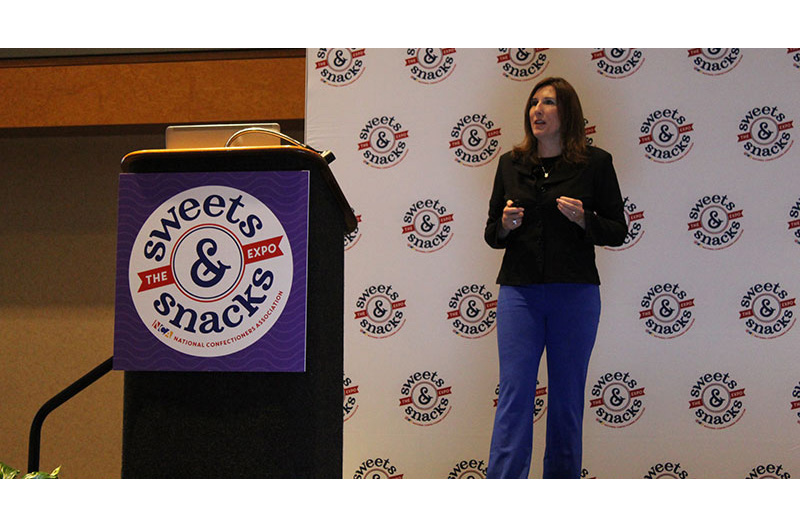Consumers continue to seek novelty food items that provide “fun” and enjoyment, while remaining under financial pressures, according to Anne-Marie Roerink, president of 210 Analytics. Roerink provided Sweets & Snacks Expo attendees this week with an in-depth look at the overview of the confectionary landscape, based on information from NCA’s State of Treating annual study.
Sponsored by the National Confectionary Association, the trade show wrapped up its three-day run Thursday at the Indiana Convention Center in Indianapolis.
In its annual report, the NCA found the chocolate industry sat at $25.9 billion in total sales as of January, with non-chocolate candy at $19.2 billion. The gum category also remained strong, with $3.7 billion in total sales.
Each of these three segments have increased year over year in dollar sales, with room to grow.
Roerink also shared that consumers are “typically buying confectionery in three to four different channels,” with 74 percent of shoppers purchasing sweets and snacks from supercenters and 68 percent from supermarkets.
Other statistics highlighted in the report include:
- Fifty-eight percent of shoppers buy confectionery only in-store;
- Thirty-six percent shop online and in-store;
- Five percent of shoppers shop just online;
- Nine in 10 shoppers can be persuaded to spend a little more on confections than planned;
- Eighty-six percent of people believe that it is fine to occasionally have a piece of chocolate or candy; and
- Eighty percent believe that physical health and emotional well-being are interconnected.
The study also explored the celebrations and holidays for which consumers are buying candy. Sixty-four percent of total confectionery sales take place during four holidays in particular:
- Valentine’s Day – $4.5 billion
- Easter – $5.4 billion
- Halloween – $6.4 billion
- Winter holidays – $6.5 billion
Inflation has caused considerable behavior changes, as four in 10 candy consumers have made one or more changes to where, how often, how much and what they purchase. According to Roerink and the NCA study, price dominates the confectionery purchase decision across all generations.
Key takeaways
- Most continue to buy candy, but are doing so slightly less often and are purchasing less per trip. Roerink recommended retailers focus on points of interruption, such as endcaps and secondary displays.
- Promotions have taken on an important role as consumers balance their budgets. Brands should review promotional strategies to drive incremental purchases during key weeks to win shelf space.
- Brands are the second most important factor in the confectionery purchase decision, but generational gaps exist. Retailers should use brand loyalty and proven favorites to cement sales.
- Candy consumers are active across social media platforms and browse candy-related inspiration and information. Retailers can tap into this area to push sales and inspire new usage occasions.
- Production attributes, such as sugar-free or organic, are viewed as better-for-you, but have a small shopper base and purchase frequency.
- Consumers want choice over restriction and value transparency into ingredients, sourcing and sustainability commitments.
Read more snack news from The Shelby Report.

